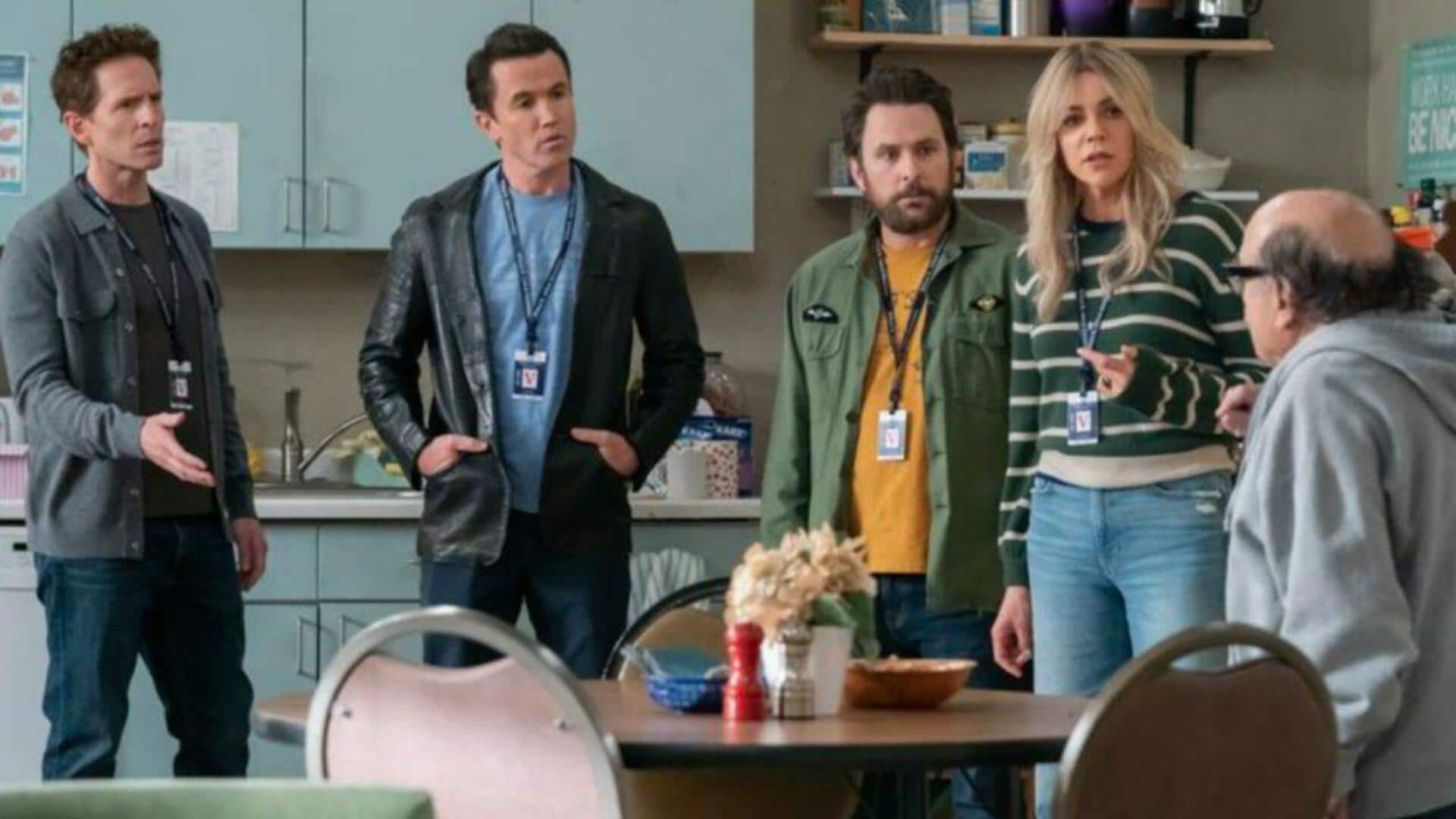
5 behind-the-scenes secrets that keep 'It's Always Sunny' so wild
What's the story
Since its debut, It's Always Sunny in Philadelphia has grown into a cult favorite. With its irreverent humor and unique characters, the show has held audiences captive for years. While fans enjoy the Gang's antics, here's the catch: several intriguing behind-the-scenes facts contribute to the show's success. Here's a look at what makes this series stand out in television comedy.
Humble start
The show's modest beginnings
The pilot episode of It's Always Sunny in Philadelphia was made with a budget of a paltry $200. Creators Rob McElhenney, Glenn Howerton, and Charlie Day shot it on a digital camcorder. This low-budget approach showed their commitment to making their vision come alive, no matter the cost. Their dedication paid off when FX picked up the show, making it a long-running success.
Personal ties
Real-life connections among cast members
Apart from the cast members's undeniable chemistry, several of them also have real-life relationships that strengthen their bond on-screen. Rob McElhenney is married to Kaitlin Olson in real life, which brings an added authenticity to their on-screen relationship. Charlie Day and Mary Elizabeth Ellis were also married before they started working on The Gang, which further adds to the group's dynamic.
Star power
Danny DeVito's impact on popularity
Danny DeVito joined It's Always Sunny in Philadelphia in its second season, playing the role of Frank Reynolds. DeVito's inclusion brought a lot of attention to the show, considering his stature as an actor and comedian. His presence certainly helped elevate the show's profile and pull in new viewers interested in seeing DeVito's role in this motley crew.
Creative freedom
Improvisation plays a key role
Improvisation is an integral part of It's Always Sunny in Philadelphia. The creators encouraged actors to explore different comedic avenues while filming. They allowed creative freedom with dialogue delivery and scene execution when appropriate. However, this freedom was balanced with the need to stay close to the script guidelines and the established character development arcs within each episode's storyline.
Real settings
Unique filming locations enhance authenticity
Many scenes from It's Always Sunny in Philadelphia are filmed at real locations around Los Angeles, not just on studio sets. This ensures authenticity while keeping production costs down. How else do you think the show manages to keep it so real and the audience hooked across its seasons? We're just glad it keeps the show's success going into the future.